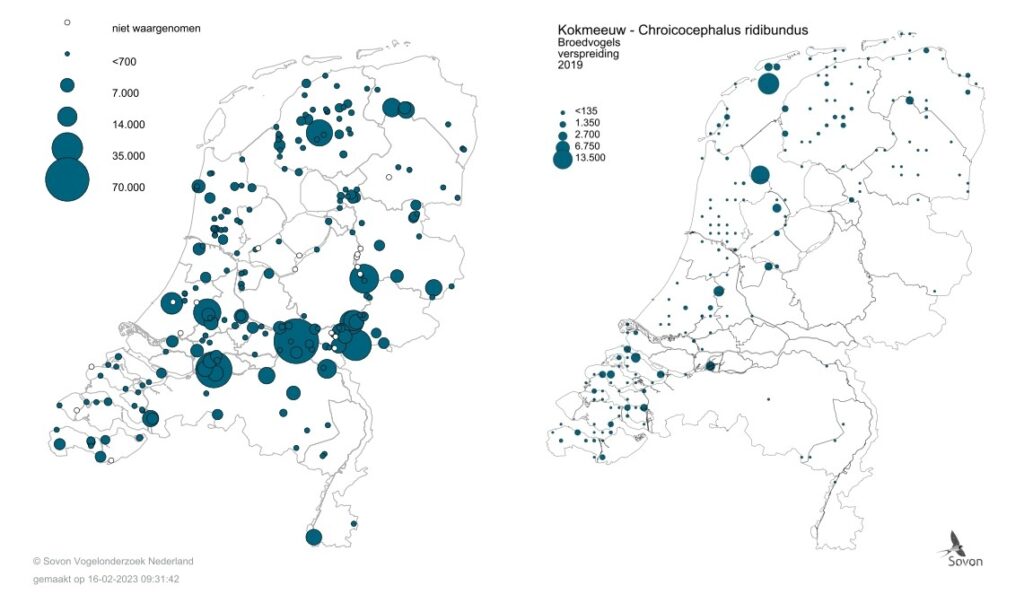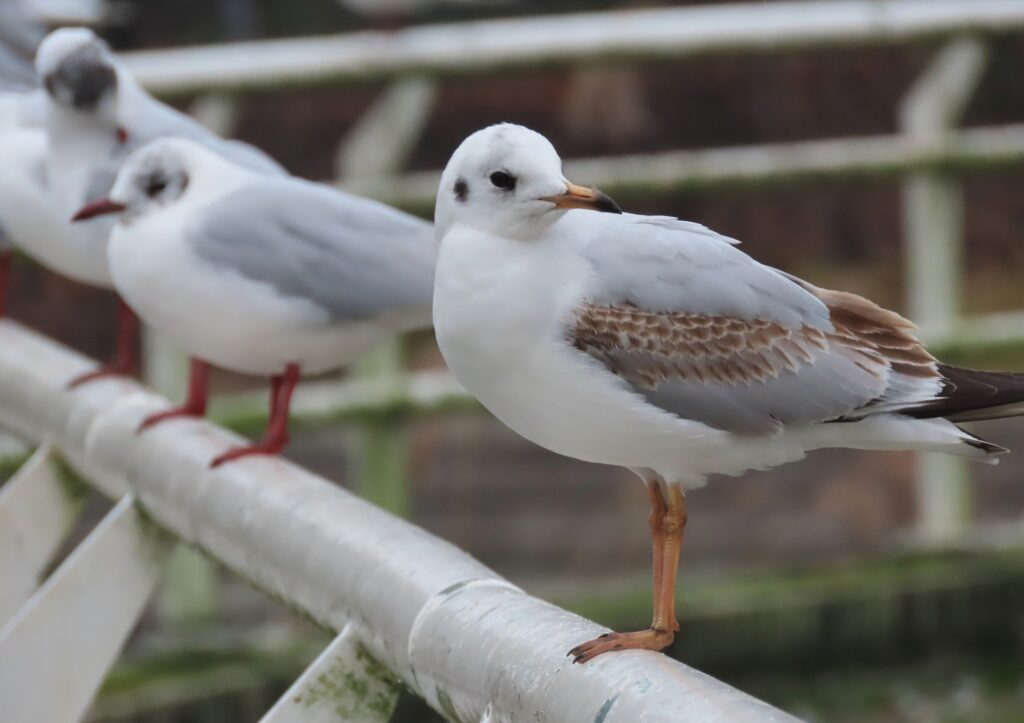Keep a look-out for Avian Influenza in black-headed gulls
At this moment – February 2023 – there are signals of high-pathogenic avian influenza (HPAI) causing death in black-headed gulls in France, Belgium, Germany and the Netherlands. We want to call on everyone to keep a look-out and to report findings of sick or dead black-headed gulls. Roosts and breeding colonies, which will be occupied starting in March, can become hot spots of this disease. This is because many birds will flock together in close proximity, causing more opportunities for virus transmission. Early detection, informing local wardens and carcass removal will help reduce mortality in these places.
Starting the last week of January, the amount of ill and dead black-headed gulls reported to the DWHC and Sovon has risen significantly. HPAI has been confirmed in five black-headed gulls near Rotterdam, Dordrecht, the Europoort, and Leiden (all in the province of South-Holland), and in Ermelo (province of Gelderland). Birds sent in from the provinces of Flevoland, Limburg, North-Brabant, North-Holland, Overijssel and Utrecht are still in the process of testing.
In other places in Europe significant mortality is seen in black-headed gulls, for example in France [https://www.francetvinfo.fr/sante/maladie/grippe-aviaire/grippe-aviaire-les-mouettes-sont-decimees-par-la-maladie_5640599.html.]. Last breeding season, this bird species was found to be sensitive to HPAI H5N1-virus, but mortality rates of this size were not seen in the Netherlands.
Roosts of black-headed gulls are mostly located in open water and breeding colonies occur mostly at places difficult to enter, such as small islands or open bogs. At the moment, knowledge of the locations of roosts is incomplete.


Carcasses of birds infected with HPAI can contaminate the environment. There is evidence that removing carcasses can help dampen the effect of outbreaks of avian influenza. This was shown in cases of mass mortality in Sandwich terns in the Netherlands, Dalmatian pelicans in Greece and black-footed penguins in Namibia. Further research is needed to determine how much, and in which species, these efforts help limiting exposure of healthy wild birds to HPAI. Knowing what is going on is a prerequisite to even start planning for preventative efforts. Have you witnessed sick or dead birds, report this, even if it concerns other species than gulls. Reports can be submitted through the websites of the DWHC or Sovon.



